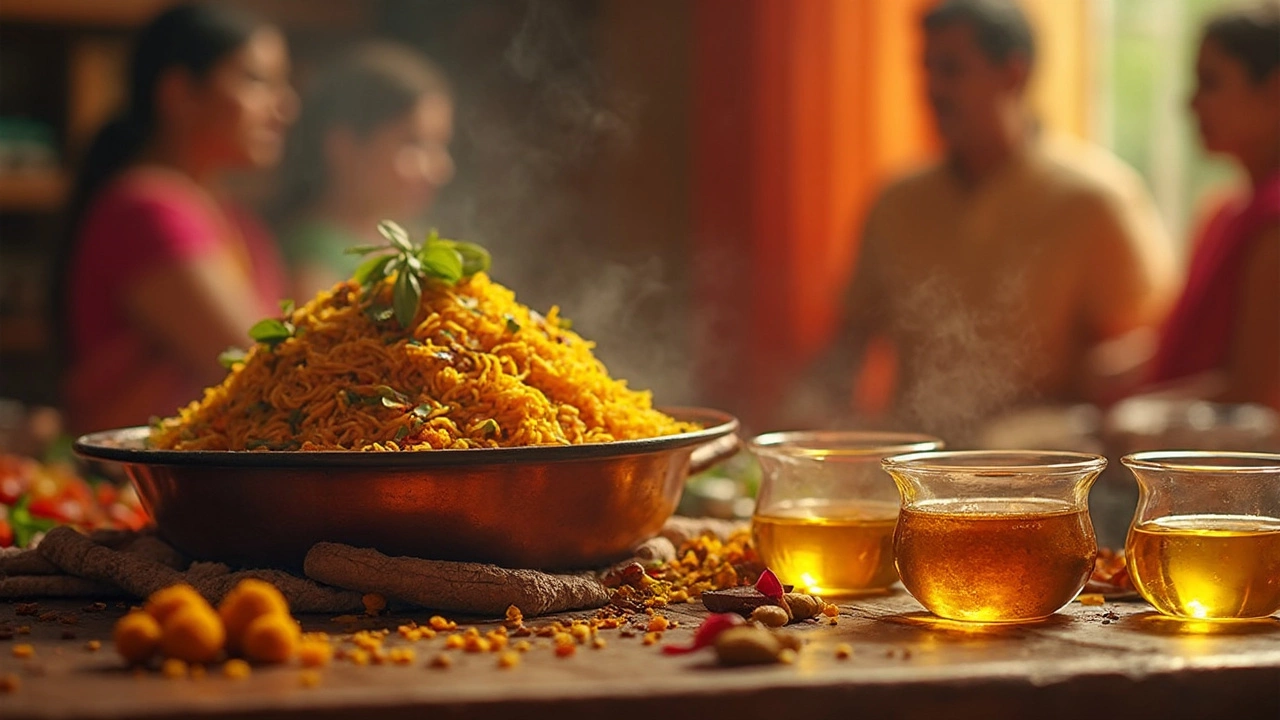Best Oil for Biryani: Choose the Right One for Perfect Flavor
If you’ve ever wondered why some biryani tastes richer than others, the answer often lies in the oil you use. The right oil can bring out the spices, keep the rice grains separate, and add a subtle buttery finish. In this guide we’ll break down the top oils, what they bring to the pot, and how to use them without overcomplicating your recipe.
Why Oil Matters in Biryani
Oil isn’t just a cooking medium – it’s a flavor carrier. When you fry onions, garlic, and whole spices in oil, those aromatics dissolve into the fat, creating a fragrant base that spreads through every grain of rice. Some oils also have a higher smoke point, which means you can fry at a higher temperature without burning the spices. On the flip side, an oil with a strong taste can overwhelm delicate flavors like saffron or cardamom. So picking an oil that balances heat tolerance and flavor is key.
Top Oils and How to Use Them
Ghee (Clarified Butter): This is the classic choice for biryani lovers. Ghee has a nutty, buttery flavor that blends perfectly with garam masala and fried onions. Because the milk solids are removed, it has a high smoke point, so you can get a nice caramelized onion without burning. Use about two tablespoons for a five‑serving biryani; add a splash at the end for extra shine.
Mustard Oil: Popular in Bengali and some South Indian biryanis, mustard oil adds a pungent kick that pairs well with fish or chicken. Its strong aroma can dominate if you use too much, so limit it to one tablespoon and mix with a neutral oil like sunflower to tone it down.
Coconut Oil: If you’re making a coastal or Kerala‑style biryani, coconut oil brings a subtle sweet note that complements coconut milk and cashews. It has a lower smoke point than ghee, so keep the heat moderate. A quarter cup is enough for a pot of rice.
Sunflower or Canola Oil: These neutral oils are great when you want the spices to shine without any extra flavor. They have high smoke points, making them ideal for the initial tempering of whole spices. Use them as a base, then finish with a spoonful of ghee for richness.
Sesame Oil (Toasted): A little goes a long way. Toasted sesame oil adds an earthy, nutty depth that works well in biryanis with lamb or beef. Use only a teaspoon mixed with a neutral oil; too much can make the dish taste bitter.
Quick tip: Always heat the oil before adding whole spices. This “burst” technique releases essential oils from the spices and prevents a raw taste. When the spices turn fragrant and slightly dark, add your onions and let them turn golden before moving on.
Remember, the best oil for biryani depends on the regional style you’re after and the protein you’re using. Ghee remains the all‑round winner for most home cooks because it delivers flavor and a high smoke point without any odd aftertaste. Experiment with one new oil at a time, note the changes in aroma and texture, and soon you’ll know exactly which oil makes your biryani unforgettable.
Which Oil Is Best for Biryani? Find Out What Really Works
Ever wondered which oil is actually best for biryani? This guide compares popular options like ghee, sunflower oil, and mustard oil, weighing their flavor, smoke points, and health factors. Learn how oil choices impact your biryani’s aroma, texture, and taste. Find tips to match the oil to your cooking style and dietary needs. Pick the perfect oil and make every biryani memorable.
